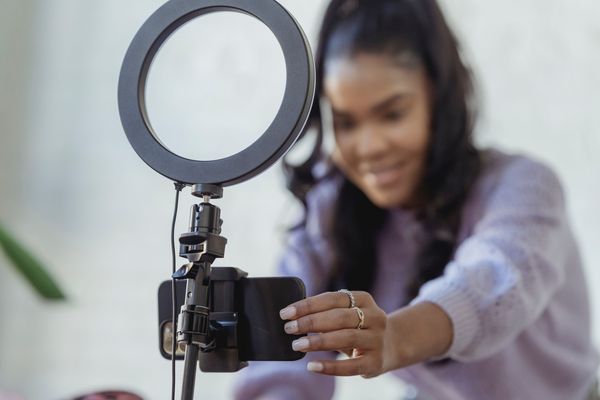How to Write a Career Change Cover Letter
The process of getting ready for a career transition is thrilling, but can also get a little scary. For people changing careers, cover letters are a powerful secret weapon.
While resumes represent a way to highlight your job history, cover letters provide you the chance to discuss past roles and how that experience will help you succeed in your upcoming position.
Thus, you should always make every effort to convince a potential employer that you are the ideal candidate for the position. And now, we will see how to write a career change cover letter.
1. Include research
To create a customized cover letter, include information from the job description and your own company research. Showcase your own qualities, expertise, enthusiasm, and commitment to enhancing the business. Making your cover letter unique will help you stand out from a crowded field of competent applicants.
2. Describe your motivations
Describe your motivations for switching careers and your commitment to picking up new skills. Stress your capacity to pick up procedures new tools, ideas, and tactics fast. Make sure to include any knowledge relevant to the new role because you are the best advocate for your existing attributes.
3. Start Strong With a Unique Opener
Use the first line of your cover letter to grab the reader's interest right away. If you want to increase your chances, avoid opening with an overused cliché about being ‘the ideal candidate right person for the position' and refrain from saying, ‘I'm eager to apply for [Position] at [Company].'
Introduce yourself with a question, a tale, an intriguing fact about your experience, or perhaps a brief anecdote that introduces the reason you've chosen to change careers. Just make sure it has something to do with the particular position sales role or career path you're looking for.
4. Introduce Yourself
What three things about yourself would you tell a hiring manager if you could only say three things?
Are you, for instance, a tech-savvy customer service representative ready to take customer experience and showcase your skills in a sales position? Do you have a super-organized office manager who wants to go into human resources? Are you a former graphic designer who is now a software engineer looking for a position where you can get hands on experience and use both your technical knowledge and your creativity?
In this section of your cover letter, highlight the traits that set you apart from other applicants and employees. Let's check an example.
Try to refrain from going into much detail about your experience; there is no need to. Your introduction should be brief, to the point, and pertinent to the position. You'll love learning about some interview questions hiring managers love asking.
5. Include a Digital Business Card
Since the 15th century, business cards have been a crucial instrument in conducting business. Do you want to give off the impression that you've got it together? That is what a business card does.
Having a set of business cards demonstrates your readiness, concern for appearing professional, communication skills and interest in forming contacts. A unique value well-designed and appealing digital business card design grabs attention and leaves a good first impression.
You can even make a difference by revealing your vision at the first moment with Vcard QR codes suitable for the digital age. With the help of a Vcard QR code, people can instantly reach your contact information and all the details like your email and even your birthday by scanning it.
6. Express Your Excitement
Mention your enthusiasm true passion for the business. This is yet another method for standing out among qualified applicants.
Employers might be more interested in someone who is really enthusiastic about their company and the position, rather than someone who is only interested in getting a job. Make it apparent in your cover letter that you are familiar with the company and are genuinely excited about the chance to work there.
The hiring manager should be able to see from your cover letter that you're really enthusiastic and interested in the position, even if it means beginning with an entry position. To demonstrate dear hiring manager that you've done your research and are confident you'll fit in, mention specifics about the organization's mission. You can also mention their principles or product that you admire or that adhere to your own standards. Let's see how an example of it!
Unlike traditional cover letters, a career change cover letter features a unique story about why you're changing careers. Were you motivated by a noteworthy occurrence? or career change statement Have you always had a secret desire to work in this new field?
Your desire to pursue a side project full-time was sparked by working on it. Despite your unusual history, explain to strong candidate and the recruiting manager why you're so enthusiastic about their job position.
7. Outline Your Performance in Previous Jobs
Your cover letter should emphasize your accomplishments from prior roles. This can entail key things as meeting sales targets, controlling staff, or finishing a significant project.
This shows the employer how you would benefit the company name business even if you lack relevant, job-related experience. Choose one or two concrete examples to illustrate how you have met the position's requirements. Whenever feasible, use numbers to quantify your positive impact.
8. Include Your Skills That Can Transfer to the New Job
You should detail exactly how your hard and soft skills apply to current role and the new career, as well as how your successes and track record from prior employment may be transferable skills here.
For instance, be sure to include in your resume and cover letter that you are proficient with a certain piece of software you are aware is used in your new position, previous role and/or industry.
This can be done in an organized manner using bullet points. Additionally, it might be simpler for the to choose you based on your relevant talents more than half others.
Identify the top three to five abilities necessary for this position, and then briefly describe how your experience relates to each. Give proof that your experience had a positive effect or helped the project management team or company achieve its aims. Hard data and facts are unavoidably impressive to hiring managers.
Be honest about this. Don't mention a topic in your cover letter if you don't have any direct experience with it. Stretching the facts could get you a first interview, but eventually, your lie will come up with you. Do not apologize for the experience you lack in any way.
9. Bring It All Together
Consider the last few sentences of your cover letter as the conclusion. Use your concluding phrases to bring everything together, since you've spent the prior paragraphs arguing why you deserve an interview. Additionally, make sure to focus on what you can provide the business rather than the customer needs or the other way around.
10. Get Great References
When a career change, you must gather numerous trustworthy references that can attest to your credentials, abilities, and character. This list could include:
- Current or former managers
- Current or former employees
- Company summaries of your accomplishments
- Mentors, counselors, or ex-teachers
When the employer requests references, compile a list of them. As a matter of professional politeness, make sure to get permission from each of your references before including them.
Include a brief statement or phrase outlining briefly explaining your relationship with each person, followed by their contact information, along with their name and title.
Final Thoughts
In your cover letter for a career move, be sure to emphasize all of your qualifications. By following the tips we provided, you can position yourself as a strong contender with a full resume writing a distinctive and worthwhile viewpoint on new industry.



